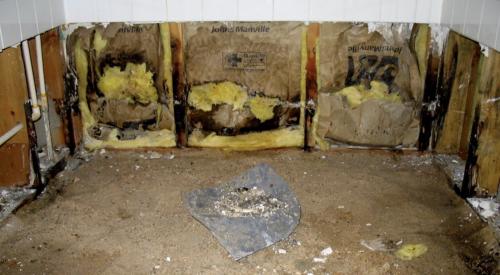|
Faced with the current hard insurance market and no real confidence that it will soften soon, many builders are following the Franklin Roosevelt policy - try something, anything. The biggest builders are the most active innovators but certainly not the only ones changing the status quo.
Builders of all sizes are moving aggressively into risk-management programs designed to minimize their liability and shift more of it to the trades. Many insurance professionals believe that if and when the liability insurance market softens and more insurers enter the market, they'll do so with robust underwriting programs designed to separate builders into "tiers" of risk. The best risk-management programs will garner the best rates and fewer exclusions.
Horsham, Pa., builder Stuart Price (Granor Price Homes) had plenty of reason to get involved in the NAHB task force he chaired to investigate the general liability insurance crisis. Price builds primarily townhouses and at one time faced a tenfold increase in his liability insurance premium.
"NAHB is instituting a course in risk management that will teach builders the basics of how to avoid losses by implementing quality control and safety programs, good design, good customer service," Price says. "And we'll show them how to transfer risk wherever possible. You have to make trade contractors responsible for the work they do and the materials they provide.
"We provide our buyers with an insured warranty, and we require our trades to comply with that set of standards. In states where binding arbitration clauses are allowed in contracts, you need to do that in all contracts, those with trades as well as those with buyers. The crux of our course is the same approach I take in my business: You have to do everything you can to make your company look good to insurers and their underwriters."
"We had no losses," Price says, "and yet the carriers didn’t want us because we build attached product. When we went shopping for a policy, we found carriers were afraid of townhouses whether they were condo or fee-simple."
Price ended up with an umbrella coverage written by a regional carrier at three times his previous rate, a big improvement over 10 times.
"You need more than a clean claims record," Price says. "You have to be able to document every element of your risk-management program " warranty history, quality control, your safety history, even the biographies of company owners and key employees."
Captives and Wraps
Among large builders, the innovations generating the biggest buzz are "captive" insurance companies and "wrap" policies, on a project-by-project basis or involving the full company.
Erick Johnson, a Phoenix insurance broker and former risk manager for Del Webb Corp., once ran that public Giant's captive company. He's an expert at setting up captives but not a big fan of putting local and regional builders into such insurance vehicles. "I'm trying to keep builders from chasing captives for the wrong reasons and wasting a lot of money in the process," he says.
| I'm trying to keep builders from chasing captives for the wrong reasons and wasting a lot of money in the process. - Erick Johnson |
A captive insurance company is just an expensive way to self-insure, Johnson says, not so different from a standard policy with a self-insured retention of $250,000 or $500,000 per occurrence. "Deductible is another way to say the same thing," he says. "Operationally, it's all the same."
"In a captive, you just set up your own company to insure only your corporation. In the old days, most of them were domiciled offshore. Ours was in Bermuda."
The captive takes the first $250,000 of risk, Johnson says. "Then you find a domestic carrier to 'front' a $1 million general liability policy - first-dollar coverage. That carrier then reinsures the first $250,000 with the captive and cuts a separate $750,000 policy with another reinsurer. The captive's dollars are the parent's dollars. If there's a claim, the front pays the whole thing but turns around and bills the captive for $250,000. It's the same as a deductible."
Originally, captives were tax dodges. When the parent paid premiums to the front, some of the money went back to the parent through the captive. But the parent took a tax deduction for the full amount of the premium.
The Internal Revenue Service figured that one out some years ago, Johnson says. So why are captives so popular today? "In a hard market, they work for someone who's getting a raw deal from the underwriters " not getting credit for low losses and good risk management," Johnson says. "The trouble is, setting up a captive is not cheap. There are a lot of costs, and most builders cannot realize enough benefit to justify the costs. Any builder thinking about doing a captive should do a feasibility study first and carefully count the nickels. I killed the one we had at Del Webb."
| Builders must establish systems to track compliance with contractual insurance requirements.-Jeff Masters |
Nonetheless, most of the top names in PB's Giants rankings operate captives. Maybe it's a status symbol.
In California, wraps are almost standard operating procedure because it's so hard for trades to get liability insurance. A wrap policy bundles the builder and trades together as if one company did the whole production process. Former PB Builder of the Year Mark Buckland of The Olson Co. is a big fan.
"After 9/11 we looked for liability insurance for months, and nobody was in the market," Buckland says. "Then we found that Zurich was still around, but they had this new full-company wrap program that required a lot of diligence by the builder."
"They send out teams of people to go over your quality control and inspection processes. You have to do third-party inspections at various stages. They want a lot of customer service, and you have to stay with your homeowner associations for 10 years. They also look at your history, and in the last 12 years we've had just one claim for $50,000."
|
Olson was able to get a Zurich full-company wrap, which includes all the trades. "That's a good thing," Buckland says, "because the trades can't get insurance anywhere, especially for attached, and we do a lot of attached.
"With the full-company wrap, we get better pricing from our trades because we're able to offer them work they can't get elsewhere. We ask each trade for a small deductible to keep them focused on quality. For all practical purposes, we are building the whole project ourselves."
But even Olson's costs are going way up on its next renewal - from $2 million to $4 million, which adds about $3,500 to the price of the company's average home. The deductible is $250,000, but there's no mold exclusion. The firm did 680 units for $150 million in 2002.
If there's one message that comes through loud and clear from how the smartest builders are responding to this insurance crisis, it's that the days of fly-by-the-pants business management are probably gone for good.
"Builders must establish systems to track compliance with contractual insurance requirements," says Los Angeles attorney Jeff Masters, a litigation partner in the law firm of Cox, Castle & Nicholson, which specializes in protecting builders against construction defect litigation. "You've got to ensure that your key contractual risk-transfer provisions are never modified or diluted. Effective record retention is important to ensure that insurance information and project documents can be retrieved whenever they are needed."
Project documentation must include sales contracts, warranties and any alternative dispute resolution provisions in place, such as mediation or binding arbitration. Other important records include all claims of defects and guarantees of builder right of access, inspection, testing and repair.
Effective customer service can make or break a builder's risk-management program, Masters says. "Until now, insurers generally required only confirmation that an ongoing post-sale customer service program was in place. But today insurers are placing a much greater emphasis on it. They want to know exactly what you're doing."
Back to LLCs?
In many states builders can operate through limited liability companies (LLCs), which combine a partnership's tax efficiency with a corporation's liability-limiting features. It used to be more common that builders created single-purpose LLCs for each project, with other entities providing the LLC with contracting, accounting and other services via development management agreements. In an increasingly litigious world, it might be time to dust off this approach.
But while LLCs offer advantages, they also have disadvantages. They require the builder to respect the separateness of each entity by observing corporate formalities such as maintaining separate bank accounts and carefully documenting intercompany loans and other transactions. These steps are essential to avoid alter-ego and enterprise liability attacks, in which a claimant attempts to "pierce the corporate veil" and reach assets of owners or affiliated entities.
LLCs also raise questions about when to dissolve the entity, including who will perform customer service and warranty work after dissolution, and whether adequate completed operations liability insurance coverage can be purchased for the dissolved entity.
Specialized Policies
To address the problem of exclusions in standard liability insurance, many builders are buying specialized policies such as "contractor's pollution liability insurance," which covers builders against claims of bodily injury and property damage resulting from releases of "pollutants" associated with builder operations. Such coverage is especially prudent for builders operating on urban infill sites, brownfields and former military bases. But equally important, these policies provide coverage for mold claims that often are excluded from general liability policies.
Kentucky-based Giant The Drees Co., which operates in a number of states (including highly litigious Texas) and closed 2,831 sales for revenue of $850 million in 2002, has taken this step. "We used to have a $1,000 deductible on our general liability policy," chairman Ralph Drees says. "Now it's $5 million. We're really insured only for catastrophic events. But we got the contractor's pollution coverage to protect against mold claims, especially in Texas."
"Texas has a lot of expansive soils," Drees operations administrator Dianne Walter says. "That movement sometimes causes plumbing or water-intrusion problems that can lead to mold. That's one reason there are so many mold cases in Texas. We've addressed the issue with a very aggressive mold protocol in our standard operations. Our excess insurance carriers say it's the best they've seen in the industry."












